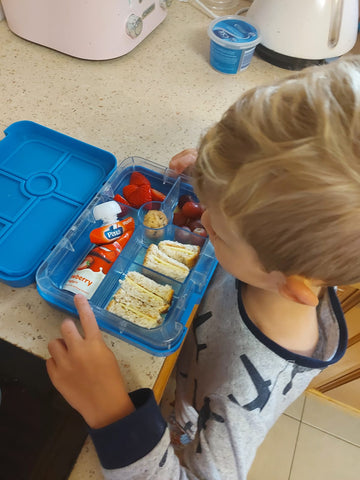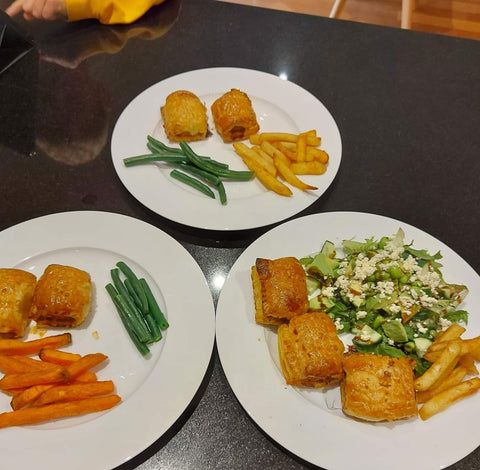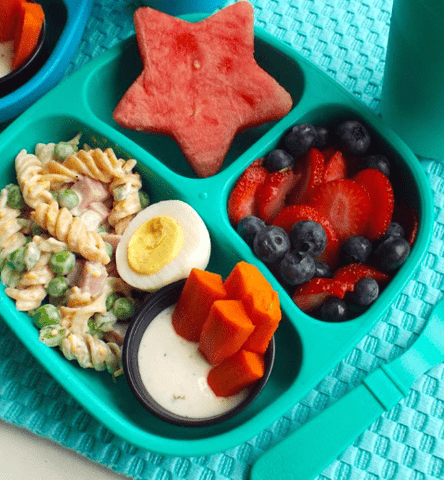5 Tips for stress-free mealtimes with fussy eaters
5 Tips for stress-free mealtimes with your fussy eater
When it comes to fussy eating toddlers and kids, I like to consider myself a bit of a guru. I had one child who basically wouldn't eat from the get go, and another one that ate anything and everything and then at age 2 decided he wouldn't eat anything he didn't like the look of.
I have tried so many different approaches to get them to eat. Dinner time became a dreaded, stressful experience as it often led to tantrums, meltdowns and wasted food.
What I have realised over my last 6 years of parenting, is that every child is different. Some will eat, and some will be difficult. It's impoirtant to note that eating behaviours are usually linked to your child's personality traits and sensory preferences - and are not a reflection of your parenting!
Here are some tried and tested tips to make your mealtimes a stress-free experience:
1. Keep it simple, stupid!
When my first child started to refuse meals, I started to panic: "What if he loses weight / gets too thin / people will think I'm a bad parent...."
I bought all the baby cookbooks out there. I tried purees, baby led weaning, finger foods, hidden vegetable dinners, bento boxes, the list goes on.
What I've now realised, is that no child will starve in the presence of food. What they are eating is more than often, enough.
It is OK to eat the same meals on rotation. We now have 4 or 5 meals I know they will eat, and we do these on rotation during the week. Some of these are what they call "easy dinners", such as pasta, eggs and bacon on toast, homemade pizza, burritos.
We have a "healthy dinner" at least twice a week, which involves steamed vegetables served with whatever meat option we are having. I offer a tempting dessert option if they "eat up" their dinner. If they don't eat up, nothing else is offered.
2. How to introduce new foods without the meltdowns.
It is important to continue to offer new foods, but these don't have to be introduced every day. Aim for once every week or two, and then on the other days offer a variety of healthy and colourful foods that they are already familiar with.
If I am going to try a new recipe or introduce a new food, I will include at least one thing on their plate that I know they like, such as a corn cobb or cheese. This makes the rest of the new foods appear less threatening while giving them different choices. They will usually always sit up and start with the food they like, and then once eating and getting an appetite, more often than not they will try the other food on the plate.
Some children, particularly those with sensory issues and autism, will find the look and texture of foods a challenge. Separating foods and not letting them touch each other is a really useful strategy for fussy eaters. The Re-play divided plate and trays allow you to serve a meal in a visually appealing way with different options, while also keeping them separate. We also follow this idea with the school lunch, by using a bento style lunch box such as the Yumbox.
These separated food techniques also help with portion size control. You can monitor how much your child is eating without overwhelming them with portion sizes that are too big and confronting.

3. Routine is your key to success.
A tired child is going to be harder to deal with at dinner time. Try and incorporate a routine where your meals are served and eaten at a similar time each day. When my boys were toddlers, dinner time was around 5:15-5:30. As they have got older and started school, we can now push it back to 5:45-6pm. The later they eat, the more tired and hungry they are - and the more likely the meal will be a difficult experience.
Try to limit the amount of snacks and drinks given before mealtime. A hungry child is more likely to eat without fuss than a child that is already full or doesn't have an appetite.
We try to eat most meals together as a family and at the dinner table. By doing this, you are role modeling positive eating habits. It is based on the psychology concept of "monkey see, monkey do." They are watching you to learn their behaviours - such as table manners, how to use utensils and trying new foods.

4. "Let it go."
It's easy for dinner time to become a negative experience when a child refuses to eat. It's important to keep mealtimes a positive and short experience. Punishments or discipline with how much your child eats can lead to poor eating habits and negative associations with food later in life. Do not force your child to eat. But do praise them for eating - even if they only try a mouthful or small portion.
5. Follow the 20 minute rule.
If they take longer than 20 minutes to eat their meal, simply say "dinner time is over now, you can leave the table."
Often toddlers and children use their refusal to eat as a form of power. It is one of the few things they have control over - and they can see it makes you annoyed / frustrated /angry. By following the 20 minute rule, it prevents the "power struggle" from dragging on. It's also important for you to be firm - if they do not eat the food in front of them, that is OK, but there is nothing else on offer.
Wishing you all the best on your journey towards fuss-free meal times. x
This article was written by Sarah, mother of two, psychology teacher and owner of The Sensory Specialist

